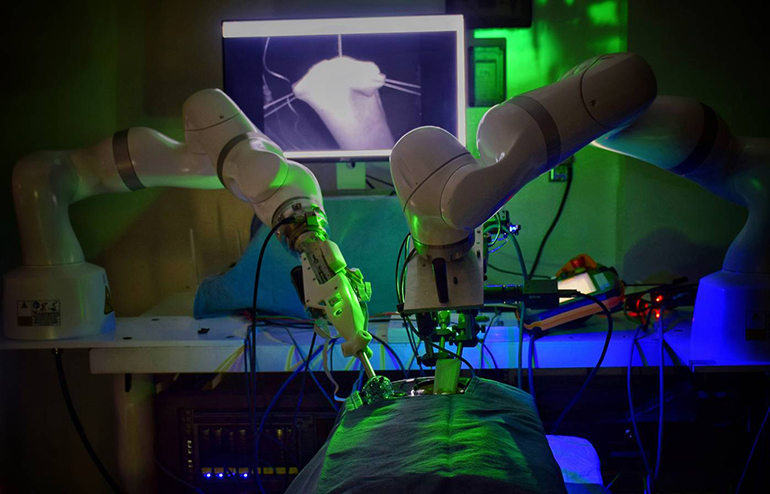Researchers at Johns Hopkins University developed and now successfully tested the Smart Tissue Autonomous Robot (STAR), a self-guiding surgical robot that can perform challenging laparoscopic procedures in gastrointestinal surgery, including intestinal anastomosis. The robot can adjust its surgical plan in real time, just as a human surgeon would, helping it to adapt to changing conditions during surgery. The researchers hope that such technology can allow every patient to enjoy the potential for optimal surgical outcomes, regardless of the surgical skill and experience that is available in their locality.
Surgical robots are advancing in complexity and in the range of tasks they can assist with. However, a fully autonomous surgical robot has yet to emerge, until now. This latest technology has shown that it can perform a particularly tricky surgical procedure, almost completely independently.
Strikingly, the robot can adapt its surgical plan in response to unexpected occurrences during a procedure, just as a human surgeon would. “What makes the STAR special is that it is the first robotic system to plan, adapt, and execute a surgical plan in soft tissue with minimal human intervention,” said Axel Krieger, one of the leaders of the study.
The system incorporates an advanced imaging system that allows it to easily visualize the surgical field, and it also employs custom suturing tools that let it perform particularly tricky and fiddly procedures. This includes intestinal anastomosis, where two ends of an intestine are joined, with huge potential for risky adverse events in the form of intestinal leakage if the procedure is not done correctly.
“Our findings show that we can automate one of the most intricate and delicate tasks in surgery: the reconnection of two ends of an intestine,” said Krieger. “The STAR performed the procedure in four animals and it produced significantly better results than humans performing the same procedure.”
The researchers hope that the technology can help pave the way for more autonomous surgical robotic technologies, with multiple benefits for patients.
“Robotic anastomosis is one way to ensure that surgical tasks that require high precision and repeatability can be performed with more accuracy and precision in every patient independent of surgeon skill,” said Krieger. “We hypothesize that this will result in a democratized surgical approach to patient care with more predictable and consistent patient outcomes.”
Studies in Science Robotics: Autonomous robotic laparoscopic surgery for intestinal anastomosis
